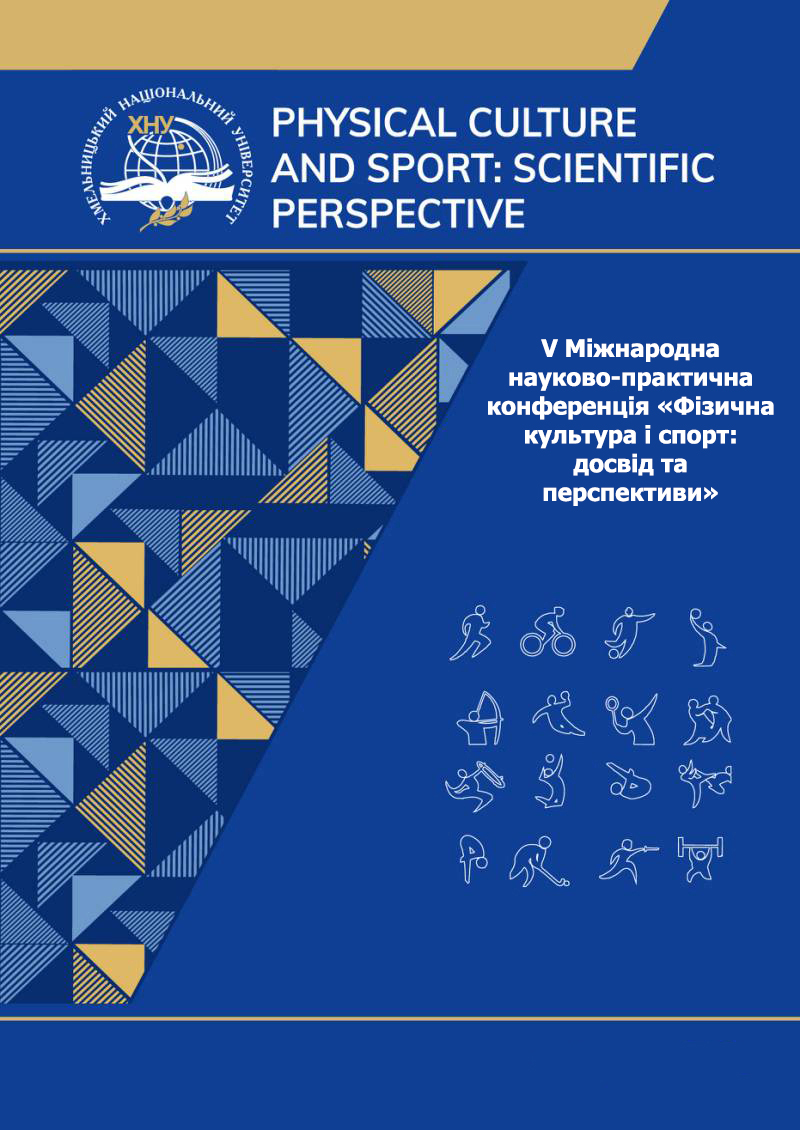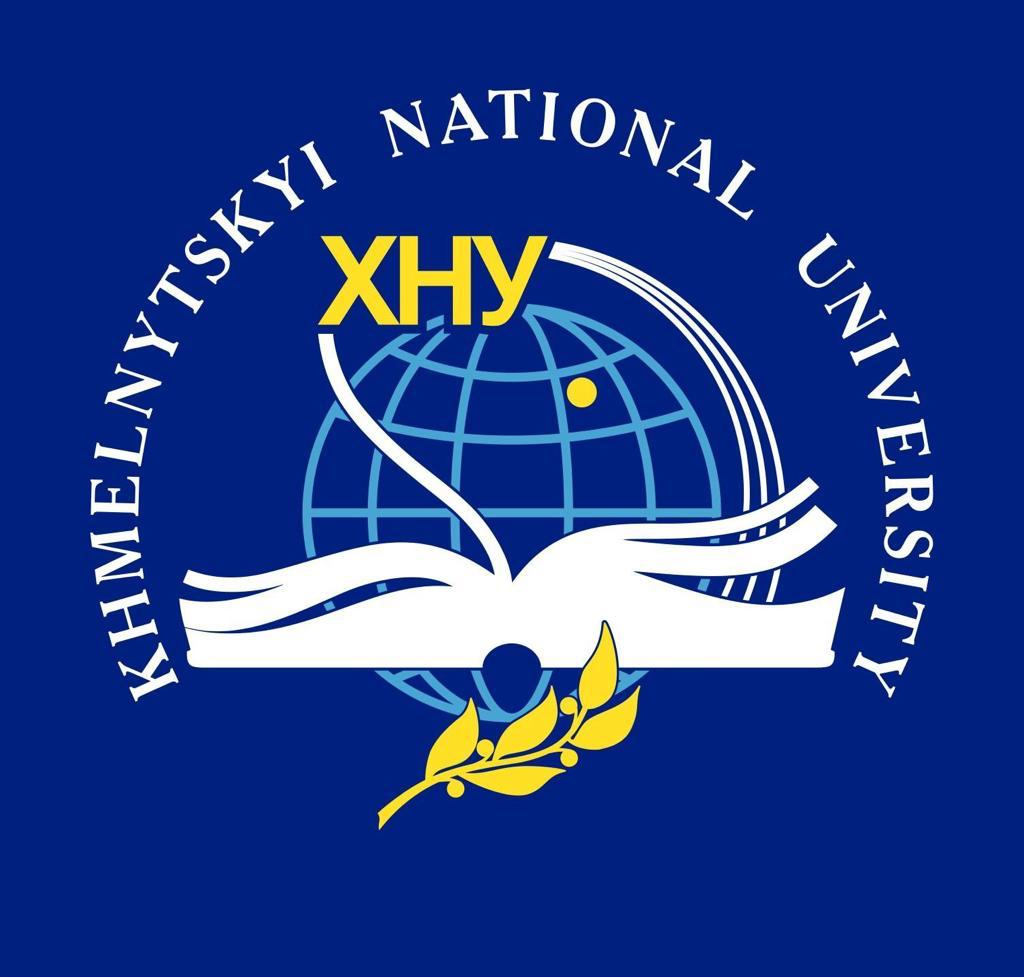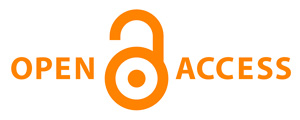INDICATORS OF MAXIMAL AND EXPLOSIVE STRENGTH OF FIRST-YEAR GYMNASTS AT THE INITIAL TRAINING STAGE
DOI:
https://doi.org/10.31891/pcs.2025.1(1).7Keywords:
young gymnasts, maximal and explosive strength, preparedness, results, differencesAbstract
During the study of specialized literature and based on the experience of training young athletes in technically-aesthetic sports, it was found that in the first year of training, there are differences in the level of preparedness of children, confirmed by research. To establish indicators of maximal and explosive strength of first-year gymnasts at the initial training stage. Theoretical analysis and generalization of scientific and methodological literature data, abstraction, historical method, comparison, pedagogical testing, and methods of mathematical statistics. Tests were used to control the maximal and explosive strength of young gymnasts: "Handgrip Dynamometry," "Standing Long Jump," "Medicine Ball Throw (1 kg) from a seated position," and "Plastic Tennis Ball Throw for Distance." Young gymnasts from the Ivano-Frankivsk Youth Sports School were involved (n=130, including: born in 2018 n=69, 2019 n=45, and 2020 n=19). The analysis of the obtained data showed that the level of preparedness varied among the participants in all aspects. The tests were divided by predominant physical qualities: maximal and explosive strength, strength and speed-strength endurance, coordination qualities, flexibility, and complex manifestations of physical qualities. The analysis indicated a gradual improvement in maximal and explosive strength indicators across all groups from younger to older children. The average test values for handgrip dynamometry were low (11.91 kgf), while the standing long jump showed statistically significant differences between all subgroups. The "Medicine Ball Throw (1 kg) from a seated position" and "Plastic Tennis Ball Throw for Distance" tests also provided important data on the level of physical preparedness of the children. The handgrip strength indicators clearly differentiated the children by birth year, while the standing long jump test reflected differences between all subgroups. These results indicate the necessity of considering individual readiness indicators in the training process of young gymnasts to ensure effective planning of training loads. The analysis of variation coefficients also confirms the need for differentiation of training loads based on individual differences. The indicators of maximal and explosive strength of first-year gymnasts confirmed the importance of individualized approaches in the training process, especially when planning training loads for young athletes of different birth years.
References
Batyeieva, N., & Kizym, P. (2017). Osoblyvosti rozvytku koordynatsiinykh zdibnostei u sportsmeniv akrobatychnoho rok-n-rolu vikom 7–8 rokiv [Peculiarities of development of coordination abilities in acrobatic rock and roll athletes aged 7–8 years]. Slobozhanskyi naukovo-sportyvnyi visnyk, (2), 13–17.
Deineko, A. H., & Bilenka, I. H. (2019). Vdoskonalennia rozvytku hnuchkosti sportsmenok 8-9 rokiv u sportyvnii himnastytsi [Improving the flexibility development of gymnasts aged 8-9 years in sports gymnastics]. Naukovyi chasopys Natsionalnoho pedahohichnoho universytetu imeni M. P. Drahomanova, (8 (116) 19), 14-18.
Yevtiarev, D. Yu., & Volkov, V. L. (2018). Dyferentsiatsiia kontynhentu v protsesi fizychnoi pidhotovky yunykh himnastok na pochatkovomu etapi bahatorichnoho sportyvnoho udoskonalennia [Differentiation of the contingent in the process of physical training of young gymnasts at the initial stage of long-term sports improvement]. Naukovyi chasopys Natsionalnoho pedahohichnoho universytetu imeni M. P. Drahomanova, Seriia 15: Naukovop-ehahohichni problemy fizychnoi kultury (fizychna kultura i sport), (5), 90–93.
Komarynska, N. (2015). Pro zmist ta orhanizatsiiu zahalnoi i spetsialnoi fizychnoi pidhotovky himnastok hrupy pochatkovoi pidhotovky v Ukraini [On the content and organization of general and special physical training of gymnasts of the initial training group in Ukraine]. Visnyk Chernihivskoho natsionalnoho pedahohichnoho universytetu imeni T. H. Shevchenka, Seriia: Pedahohichni nauky. Fizychnie vykhovannia ta sport, (129 (4)), 96–99.
Komarynska, N. (2017). Stan rozvytku koordynatsiinykh zdibnostei himnastok pershoho roku pochatkovoho etapu bahatorichnoi pidhotovky [Condition of coordination abilities development in gymnasts of the first year of the initial stage of long-term training]. Visnyk Prykarpatskoho universytetu, Seriia: Fizychna kultura, (27-28), 128–133.
Komarynska, N. B. (2016). Pro vzaiemozviazok rozvytku fizychnykh yakostei himnastok [On the relationship between the development of physical qualities of gymnasts]. Naukovyi chasopys Natsionalnoho pedahohichnoho universytetu imeni M. P. Drahomanova, (8 (78K)), 33–37.
Kokhanovych, K. (1999). Prykladni aspekty kontroliu na etapi pochatkovoi pidhotovky yunykh himnastiv [Applied aspects of control at the stage of initial training of young gymnasts]. Fizychne vykhovannia i sport, Kyiv: Olympiiska literatura, (1), 12–18.
Kravchuk, T. M., & Dorohan, S. V. (2017). Vykhovannia himnastychnoho styliu na etapi pochatkovoi pidhotovky v sportyvnii himnastytsi [Fostering gymnastic style at the stage of initial training in sports gymnastics]. Aktualni problemy fizychnoho vykhovannia i sportu: materialy konferentsii KhNPU imeni H. S. Skovorody, 74–76.
Melnyk, M., & Pytyn, M. (2015). Studentskyi sport: perspektyvy naukovykh doslidzhen [Student sports: prospects for scientific research]. Sportyvnyi visnyk Prydniprovia: naukovo-praktychnyi zhurnal, Dnipro, (3), 73–76.
Marchenko, Yu. P., Yeretyk, A. A., & Tereshchenko, I. A. [et al.]. (2003). Navchalna programa dlia dytiache-uniatskykh sportyvnykh shkil, spetsializovanykh dytiache-uniatskykh shkil olimpiiskoho rezervu, shkil vyshchoi sportyvnoi maisternosti z sportyvnoi himnastyky [Curriculum for children's and youth sports schools, specialized children's and youth schools of Olympic reserve, schools of higher sports mastery in sports gymnastics]. Kyiv.
Rudnytska, D. O., Pytyn, M. P., & Synytsia, A. V. (2023). Khoreohrafichna pidhotovka yunykh sportsmenok u sportyvnii himnastytsi: perspektyvy doslidzhen [Choreographic training of young athletes in sports gymnastics: research prospects]. Fizychne vykhovannia ta sport, (3), 113–120.
Serhiienko, L. P. (2001). Testuvannia rukhovykh zdibnostei shkoliariv [Testing of Motor Abilities of Schoolchildren]. Kyiv: Olympiiska literatura.
Sornovych, I., Khomianchenko, L., & Veselkina, S. (2019). Pidvyshchennia efektyvnosti fizychnoi pidhotovky kvalifikovanykh sportsmeniv u sportyvnykh tantsiakh shliakhom poiednannia klasychnykh pidkhodiv ta innovatsiinykh tendentsii trenuvannia [Increasing the effectiveness of physical training of qualified athletes in sports dances through the combination of classical approaches and innovative training trends]. Teoriia i metodyka fizychnoho vykhovannia, (2), 143–149.
Khudolii, O. M., & Mytskan, B. M. (2011). Chynnyky uspishnoho navchannia vpravam yunykh himnastiv na pochatkovomu etapi pidhotovky [Factors of successful learning of exercises by young gymnasts at the initial stage of training]. Teoriia ta metodyka fizychnoho vykhovannia, (3), 3–6.
Khudolii, O. M., Karpunets, T. V., & Ivashchenko, O. V. (2015). Strukturna model rukhovoi pidhotovlenosti yunykh himnastok 6–8 rokiv [Structural model of motor readiness of young gymnasts aged 6–8 years]. Teoriia ta metodyka fizychnoho vykhovannia, (4), 3–10.
Khudolii, O. M., & Yermakov, S. S. (2011). Zakonomirnosti protsesu navchannia yunykh himnastiv [Regularities of the process of teaching young gymnasts]. Teoriia ta metodyka fizychnoho vykhovannia, (5), 3–18, 35–41. doi: http://dx.doi.org/10.17309/tmfv.2011.5.70719.
Briskin, Y., Todorova, V., Perederiy, A., & Pytyn, M. (2016). Comparative analysis of choreographic training of athletes from foreign and Ukrainian sport aerobics teams [Comparative analysis of choreographic training of athletes from foreign and Ukrainian sport aerobics teams]. Journal of Physical Education and Sport, 16(4), 1352–1356. doi: 10.7752/jpes.2016.04216.
Romanchyshyn, O., Briskin, Y., Sydorko, O., Ostrovs'kyy, M., & Pytyn, M. (2015). Pedagogical colleges students readiness formation for sport and recreation activity [Pedagogical colleges students readiness formation for sport and recreation activity]. Journal of Physical Education and Sport, 15(4), 815–822.
Downloads
Published
How to Cite
Issue
Section
License
Copyright (c) 2025 Юрій МАЛАНІЙ , Мар’ян ПІТИН , Андрій СИНИЦЯ , Роман РИМИК

This work is licensed under a Creative Commons Attribution 4.0 International License.





